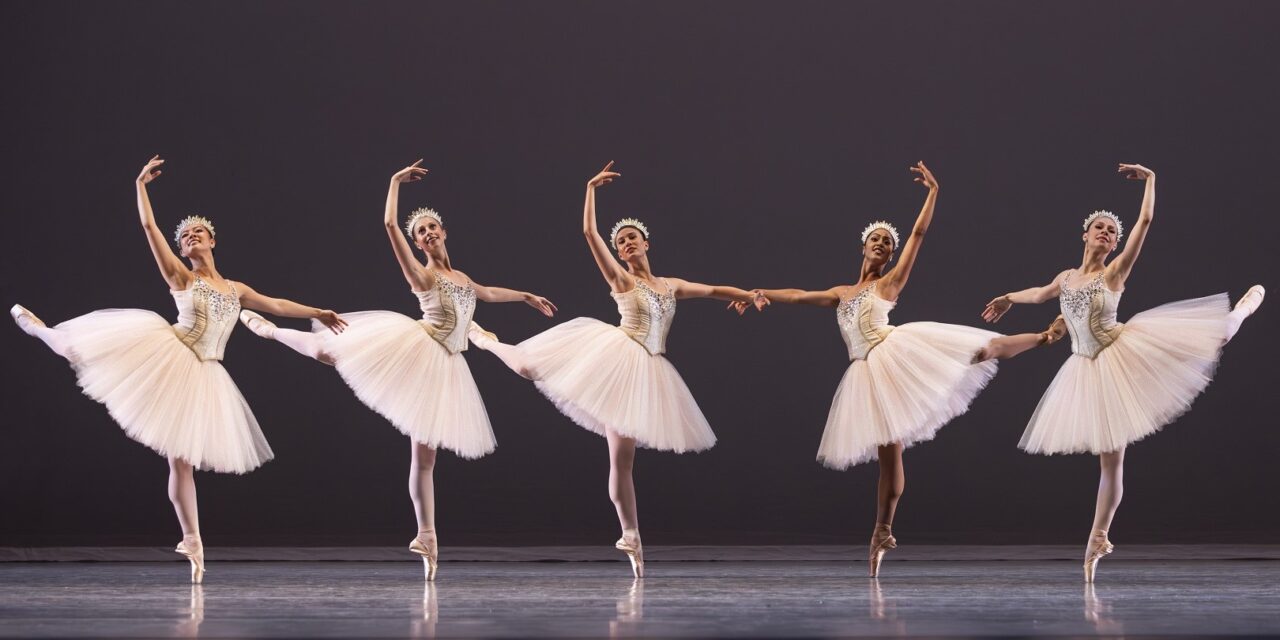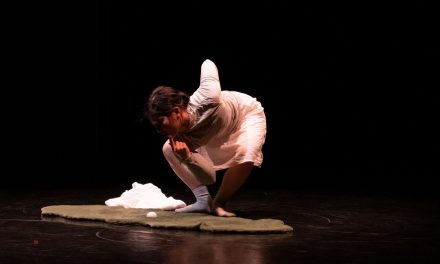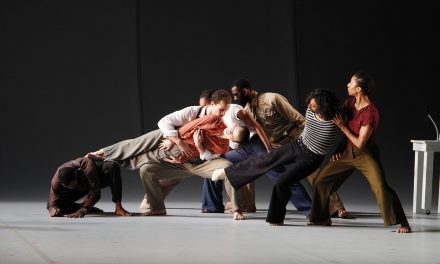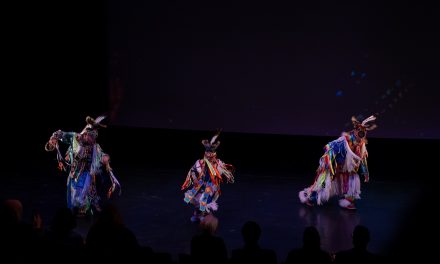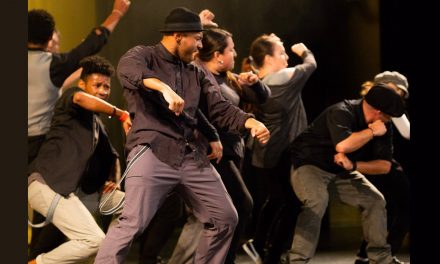When George Balanchine unveiled Jewels in 1967, it was a revelation — a full-length, plotless ballet inspired not by the stories or myths of Catherine de Medici or Louis XIV’s Rococo grandeur, but by the next generations of dance. Balanchine’s passion for the art form gifted New York City Ballet’s muses and princes; Suzanne Farrell, Jacques d’Amboise, Patricia McBride, Edward Villella, Violette Verdy, and Mimi Paul, the foundation for Jewels. The triptych distilled three great historic and distinct ballet traditions: the Romanticism of France (Emeralds), the sparkling, jazz-like athleticism of America (Rubies), and the imperial grandeur of Russia (Diamonds), set to the music of Fauré, Stravinsky, and Tchaikovsky.
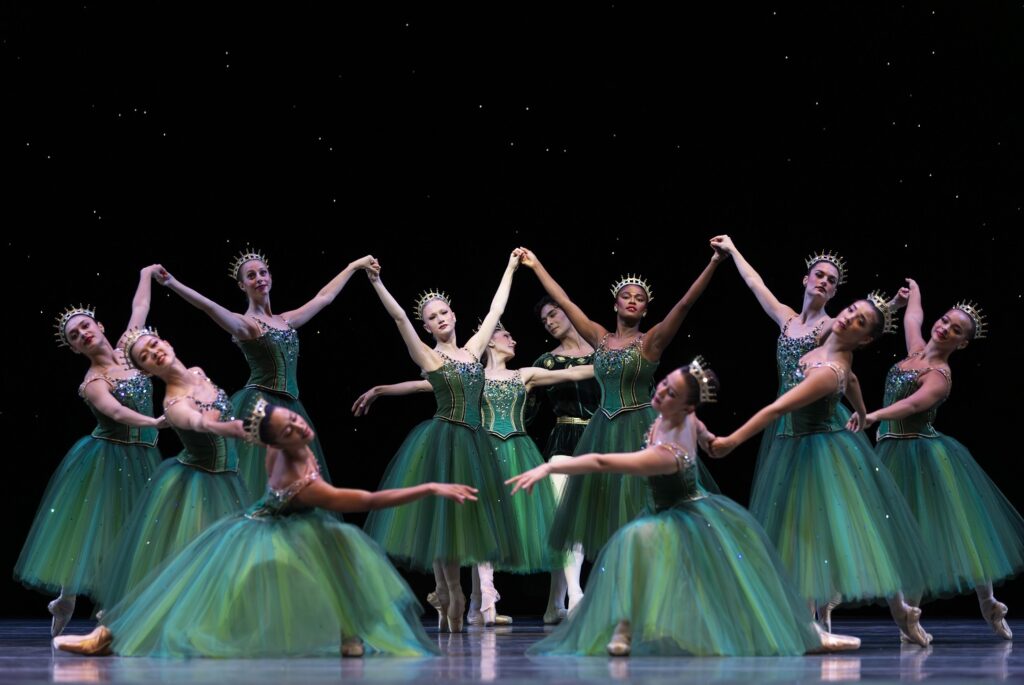
Pacific Northwest Ballet company dancers in Emeralds from Jewels, choreography by George Balanchine © The George Balanchine Trust – Photo by Angela Sterling.
This night, each movement reflected not only Balanchine’s genius, but also PNB’s precision, artistry, and emotional range under the guidance and staging of Philip Neal. The orchestra conducted by Emil de Cou with piano soloist Christina Siemens helped Pacific Northwest Ballet’s Jewels, gleam anew. Peter Boal and Jonathan Porretta provided the staging for “Rubies”.
The first movement began as the curtain rose on dancers posed in graceful, classic positions that signaled the Romantic era of ballet — heads inclined, arms softly rounded, legs in lunge or extended on pointe. Bodices and tunics bejeweled with facets of green gemstones set the tone for Emeralds, unfolding in a wistful romanticism of bygone eras. The stage glowed in candlelit ambience as the female corps, in soft emerald, lime, and wheat diaphanous romantic tutus, glided across the floor. The men, in emerald tunics and white tights, leaped with quiet strength, and the ensemble shimmered as each breath moved the dancers musically through Fauré’s luxurious phrasing.
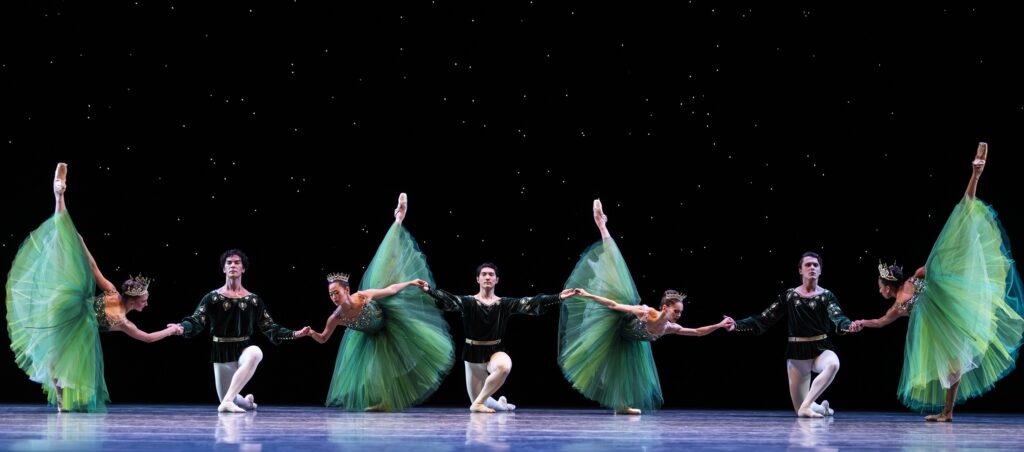
Pacific Northwest Ballet company dancers in “Emeralds” from “Jewels”, choreography by George Balanchine © The George Balanchine Trust – Photo by Angela Sterling.
Renowned designer Jérôme Kaplan’s costumes and sets offered stunning inventiveness of color and style. A graduate of L’Ecole de la Rue Blanche in Paris, Kaplan’s work has graced companies from Les Ballets de Monte-Carlo to the Bolshoi and Royal Danish Ballet. His sumptuous palette and texture echoed Barbara Karinska’s original designs for NYCB’s Jewels. Randall G. Chiarelli’s exquisite lighting ensured every gem, color, and contour was seen in full radiance.
The pas de trois brought Yuki Takahashi, Clara Ruf Maldonado, and Christian Poppe to the stage – each weaving the threads of romantic style with their own sensibility. Takahashi, clean and technical, skimmed the surface of the floor with her fast, clean footwork; Poppe offered an understated masculine grace; and Maldonado was a revelation extending her movements as though they would never end… making one feel the movement and romance of the period. Her arms, head and shoulders exquisite, her phrasing fluid, she extended beyond to become the music.
Long-limbed and statuesque 5’10”, Amanda Morgan entered the emerald haze with regal power and cool elegance. Her extensions and arabesques unfurled endlessly, while partner Luther DeMyer provided solid, lyrical support. The corps moved with unity through Fauré’s dreamscapes – the music of Pelléas et Mélisande and Shylock evoking the archetypal Romantic restraint of Les Sylphides. In the final musical strains, a swirl of emerald and pale green swept the stage as dancers knelt, ran, lifted, and posed in a tableau of classic beauty- men kneeling, women’s arms raised in celebration as the curtain fell to a roar of applause.
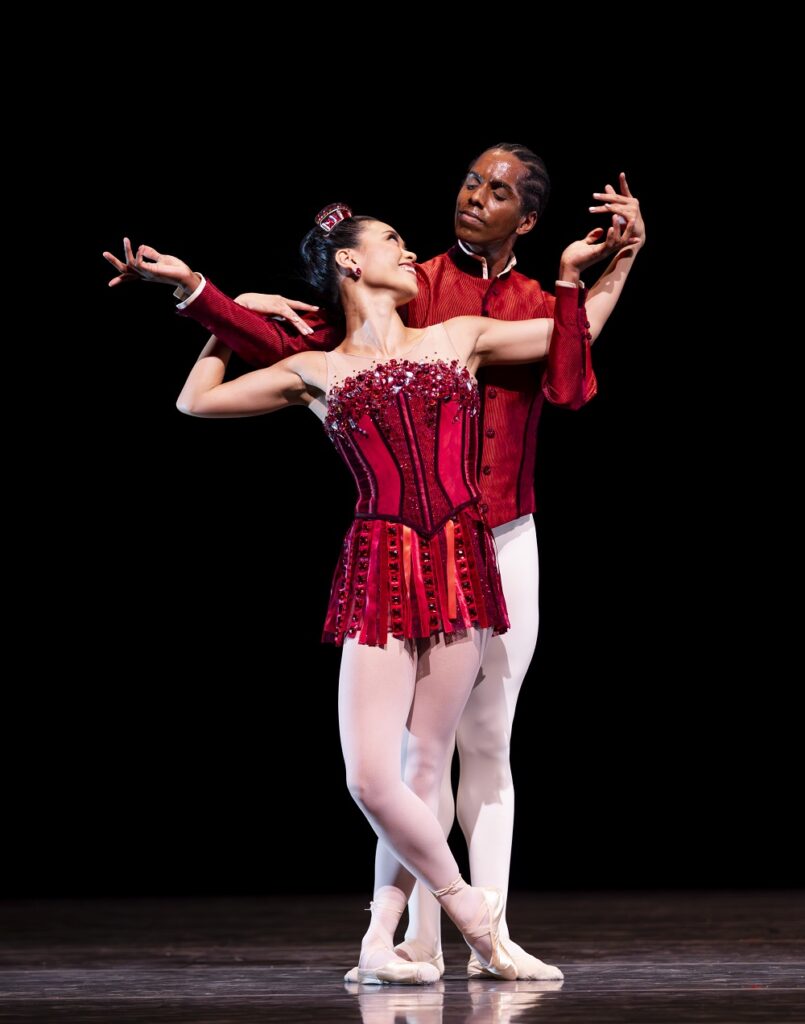
Pacific Northwest Ballet principal dancers Angelica Generosa and Jonathan Batista in “Rubies” from “Jewels”, choreography by George Balanchine © The George Balanchine Trust – Photo by Angela Sterling.
After a brief pause, the curtain rose again to the anticipated second movement. Stravinsky’s jazzy dissonance of Rubies burst into playful energy – female dancers in scarlet slatted costumes, men in crimson jackets that caught the light like fire.
Angelica Generosa and Jonathan Batista led the charge with buoyant brilliance — their pas de deux a witty dialogue of tease and technique. Generosa, effervescent and musical, darted and spun with impish joy, while Batista met her with radiant flamboyance and spontaneous wit. Together, they embodied Balanchine’s idea of U.S. playful modernity – the flirtation between freedom and form.
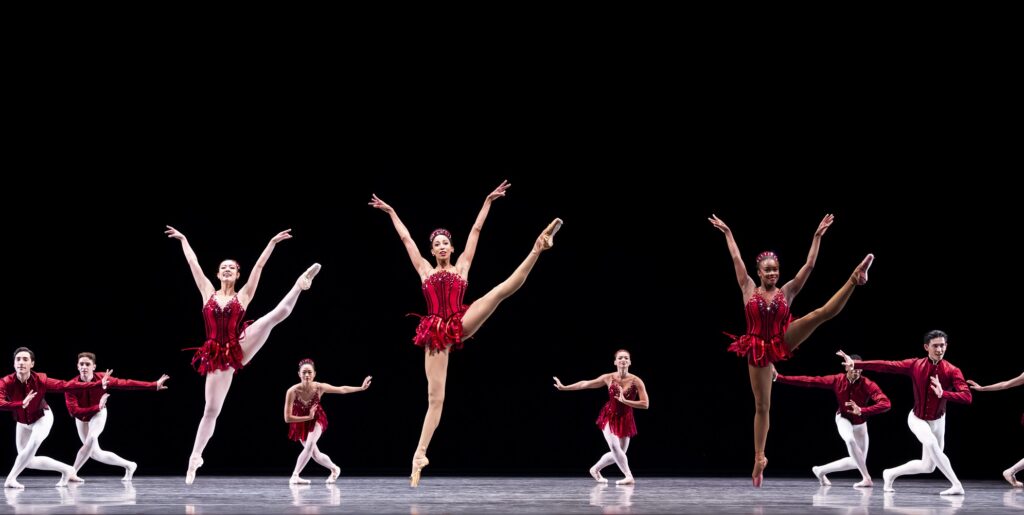
Pacific Northwest Ballet soloist Amanda Morgan (center) with company dancers in “Rubies” from “Jewels”, choreography by George Balanchine © The George Balanchine Trust – Photo by Angela Sterling.
Then commanding the stage with her striking presence — Amanda Morgan returned, earthbound, and strong, her power undeniable. In her pas de cinq, surrounded and lifted by four men, her extraordinary stature became a form of sculptural extensions where men lifted and placed her long limb split-like into position, crossing front, back, side. The choreography was dynamic and slightly detached. And behind her, the corps mirrored her energy with crisp musical precision, turning Stravinsky’s rhythmic complexities into exhilarating jazz on point.
Through crisscrossings, leaps, and playful formations, Rubies became a joyous square dance of resolved chaos. A tribute to Balanchine’s ode to American verve. By the final sprint, the company blazed to the edge of the stage with the audience erupting in delight.
Then one final break and stillness – the hush of reverence. Under golden chandeliers, the last movement Diamonds, shimmered in regal light. To Tchaikovsky’s noble score, Leta Biasucci and Lucien Postlewaite, entered with such majesty, that it brought chills watching their focus and respect for the art and history of this ballet, thus evoking the beauty and refinement of Imperial Russia.
Postlewaite, retiring after the 2025–26 season, will be sorely missed for his effortless technique and gracious partnering which was evidenced by his work in Diamonds. He showcased perfect balance and breadth – Biasucci’s delicate yet powerful lyricism matched his elegant and steady strength. Their adagio became a prayer in motion: calm, poised, transcendent. He lifted her as though weightless; she responded with lines of pure eloquence, their gestures in seamless conversation with the music.
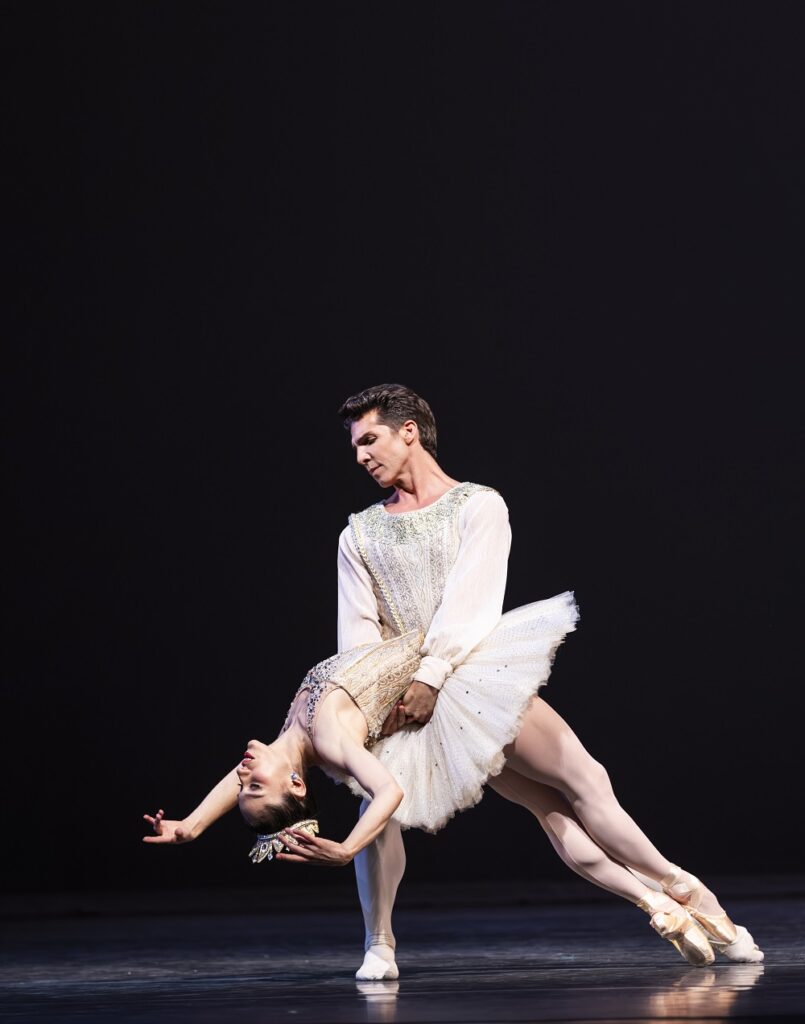
Pacific Northwest Ballet principal dancers Leta Biasucci and Lucien Postlewaite in “Diamonds” from “Jewels”, choreography by George Balanchine © The George Balanchine Trust – Photo by Angela Sterling.
The corps de ballet, pristine and united, formed flowing circles and lines leading into an impressive polonaise that echoed the grandeur of St. Petersburg’s Mariinsky Theatre. The pas de quatre, solos, and ensemble united into a crystalline portrait of grace. As the orchestra swelled, dancers moved in glittering formation — each phrase a sculpted memory of ballet’s enduring elegance.
The final bow was a coronation: a company radiant with polish and poise, its artistry gleaming like the jewels from which Balanchine drew his inspiration.
What a pleasure to see PNB once again gift its audience with excellence — in technical strength, artistry, and creativity. Under the gracious and gifted leadership of Artistic Director Peter Boal, supported by benefactors, administrative, musical, and technical teams, PNB has achieved world-class status. It cannot be said enough how deeply this company is loved and appreciated.
Thank you, Peter Boal and PNB, for bringing light into this chaotic world.
For more information about Pacific Northwest Ballet, please visit their website.
This article was edited on 10/17/25 at 1:30 pm.
Written by Joanne DiVito for LA Dance Chronicle.
Featured image: Pacific Northwest Ballet company dancers in “Diamonds” from “Jewels”, choreography by George Balanchine © The George Balanchine Trust – Photo by Angela Sterling.

